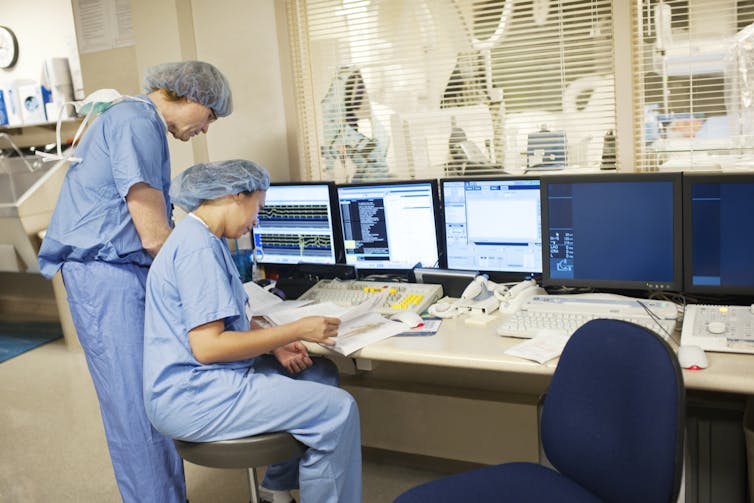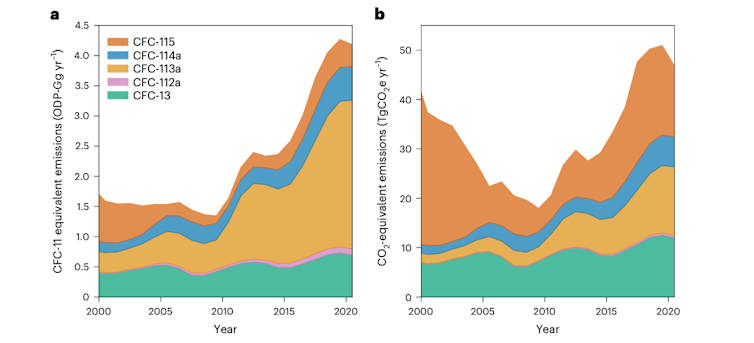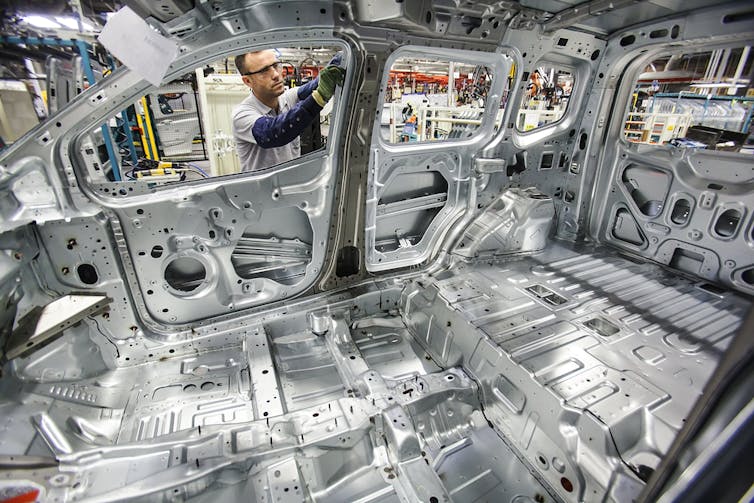Why Britain’s new CPTPP trade deal will not make up for Brexit

The UK recently announced that it will join the Comprehensive and Progressive Agreement for Trans-Pacific Partnership (CPTPP), giving British businesses access to the 11 other members of the Indo-Pacific trade bloc and bringing its combined GDP to £11 trillion.
Some commentators have suggested the deal could make up for Brexit. It’s been called “a momentous economic and strategic moment” that “kills off any likelihood that it [the UK] will ever rejoin the EU customs union or single market”. Shanker Singham of think tank the Institute of Economic Affairs has even said: “it’s no exaggeration to say that CPTPP+UK is an equivalent economic power to the EU-28-UK”, comparing it to a trade deal between the UK and EU members.
UK business and trade secretary Kemi Badenoch echoed such sentiments, telling Times Radio:
We’ve left the EU so we need to look at what to do in order to grow the UK economy and not keep talking about a vote from seven years ago.
The problem with this fanfare is that the government’s own economic analysis of the benefits of joining this bloc is underwhelming. There is an estimated gain to the UK of 0.08% of GDP – this is just a 50th of the OBR’s estimate of what Brexit has cost the UK economy to date. Even for those that are sceptical about models and forecasts, that is an enormous difference in magnitude.
Of course, the CPTPP is expected to offer the UK some real gains. It certainly provides significant potential opportunities for some individual exporters. But the estimated gains for Britain overall are very small.
The main reason for this is that, apart from Japan, the major players of the global economy are not in the CPTPP. The US withdrew from the Trans Pacific Partnership (the CPTPP is what the remaining members formed without it). And China started negotiations to join in 2022, but current geopolitics now make its entry highly improbable. India was never involved.
In addition, the UK already has free trade agreements with nine out of the 11 members. The remaining two, Malaysia and Brunei, are controversial due to environmental threats from palm oil production to rainforests and orangutans.
Britain’s existing trade agreements with CPTPP members

And despite the widespread public perception of the Asia-Pacific area as a hub of future growth, the performance and prospects of the CPTPP members are a mixed bag. The largest member, Japan, is arguably in long-term decline, as is Brunei, while just three members (Vietnam, Singapore and New Zealand had average growth in the last decade above 3% annually.
Finally, distance really does matter in trade. All the CPTPP members are thousands of miles from the UK, which explains their relatively small shares in UK trade at present.
Some benefits of CPTPP
While all of these points pour cold water on the suggested gains, there are some potential benefits from the CPTPP agreement, which allows for mutual recognition of certain standards. This includes patents and some relaxation of sanitary and phytosanitary rules on food items.
However, agreements over standards will involve the UK submitting to international CPTPP courts on these issues. This sits uncomfortably with many of the “sovereignty” objections to the European Court of Justice in relation to Brexit (largely from many of those who have extolled the CPTPP). It’s also notable that out of the nine agreements with CPTPP members that existed before the UK signed this deal, all but two are rollovers of previous EU deals.
But a trade deal with the CPTPP is worth more to the UK than separate deals with each member due to requirements around “rules of origin”, which determine the national source of a product. When a product contains inputs from more than one country, a series of separate free trade agreements may not eliminate tariffs. But if all the relevant countries are members of a single free trade agreement, then rules of origin on inputs from other members cease to be a problem (although there might be some issues if some members do not police the requirements properly).
Not the ideal agreement
While these benefits should be recognised, we should also acknowledge that the CPTPP is not the ideal agreement for Britain. As stated above, distance really does matter in trade – this is overwhelmingly accepted by modern trade economists.
Research shows that the rate at which trade declines with distance has barely changed over more than a century. This might seem strange because transport costs have fallen over time. But, as transport and communications have improved, firms have outsourced much of their production to complex supply chains that often cross national borders many times, with “just-in-time” supply schedules to keep down the costs of holding large stocks.
This means that, while trade everywhere has grown, there is still a big premium for trading (many times) across borders between contiguous countries. It is exactly this type of trade which benefits most from big comprehensive trade agreements that simplify rules of origin and regulatory paperwork.
This suggests that, while some elements of the the CPTPP offer benefits to the UK, it is unlikely to boost its trade in the way it does between countries around the Pacific Rim. For this sort of boost, the UK really needs to look towards its own neighbours. Of course, this is just the sort of agreement that Badenoch seems reluctant to discuss.
Terence Huw Edwards, Senior Lecturer in Economics, Loughborough University and Mustapha Douch, Assistant Professor in Economics, The University of Edinburgh
This article is republished from The Conversation under a Creative Commons license. Read the original article.















 Diesel school buses are not only expensive to operate, but they pose a risk to children’s health and the environment. According to the Propane Education & Research Council, with propane school buses, the classic cloud of black smoke emitted from the tailpipe is nonexistent. Propane school buses also provide a quieter ride than diesel buses, which means it’s a safer ride. What’s more, propane reduces harmful emissions that cause asthma, bronchitis and other respiratory illnesses by up to 94% compared to diesel.
Diesel school buses are not only expensive to operate, but they pose a risk to children’s health and the environment. According to the Propane Education & Research Council, with propane school buses, the classic cloud of black smoke emitted from the tailpipe is nonexistent. Propane school buses also provide a quieter ride than diesel buses, which means it’s a safer ride. What’s more, propane reduces harmful emissions that cause asthma, bronchitis and other respiratory illnesses by up to 94% compared to diesel.



